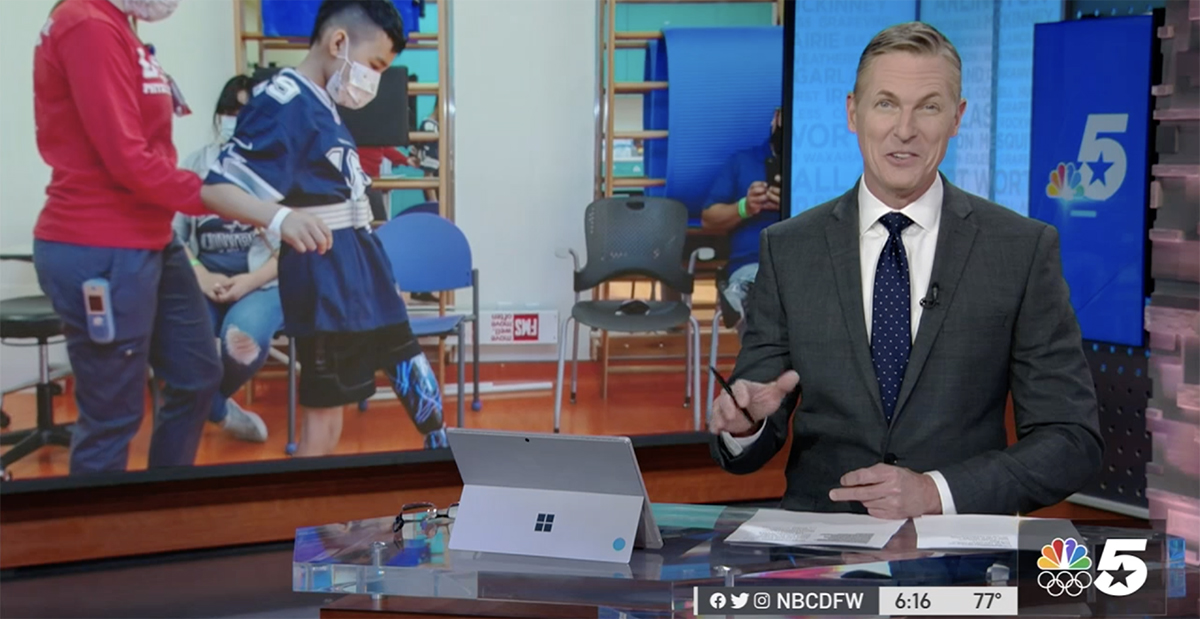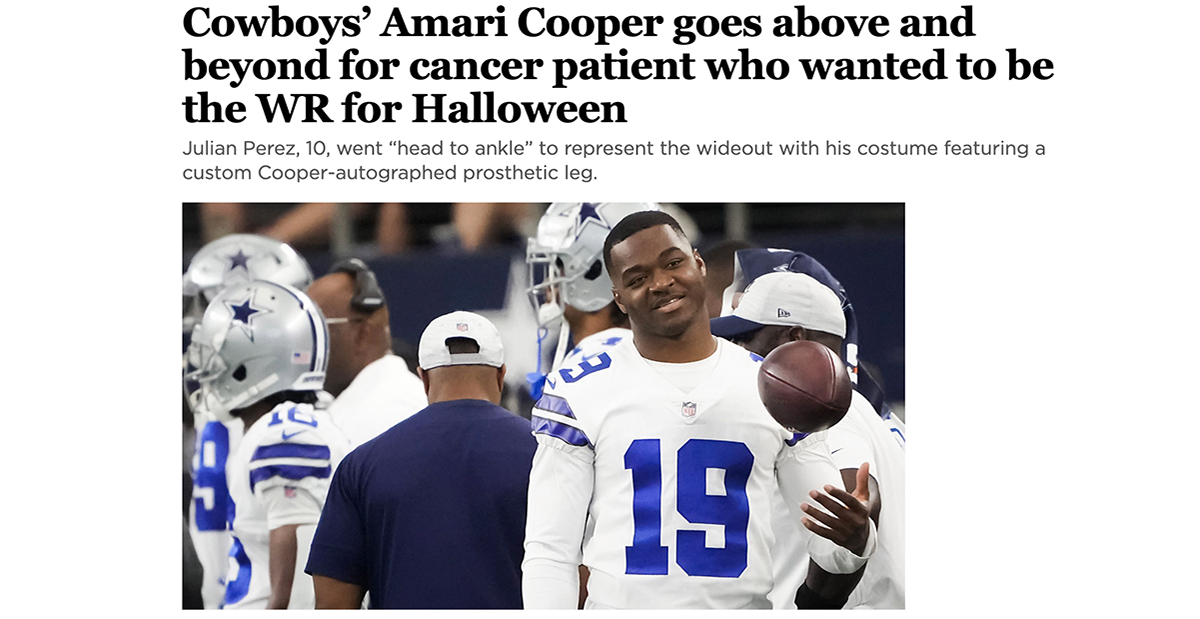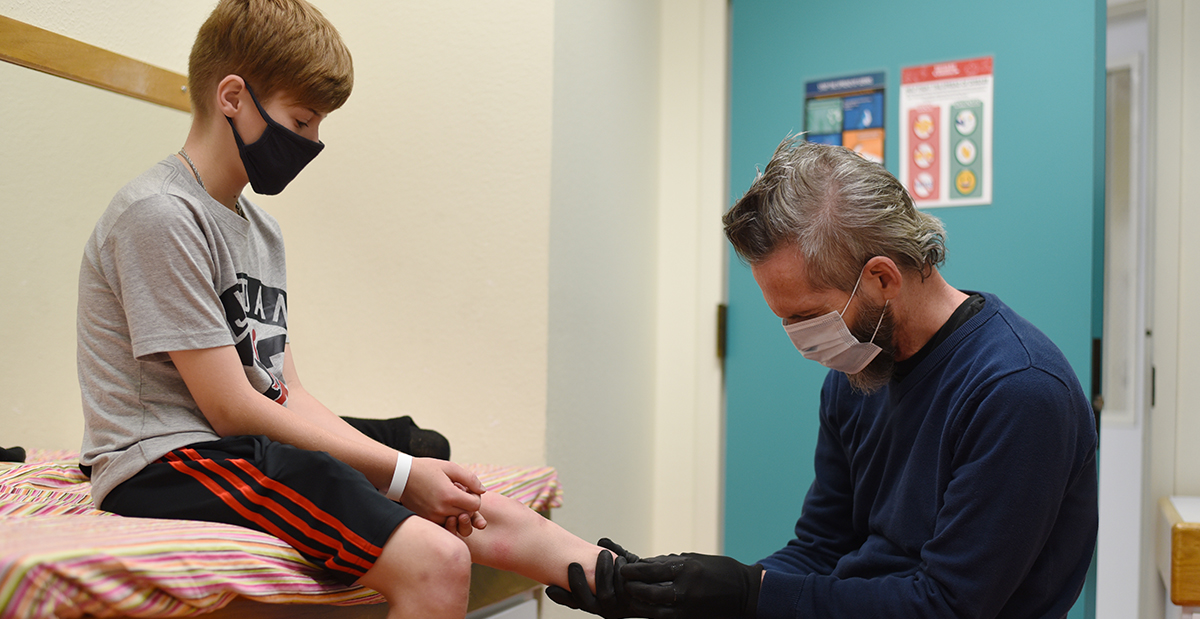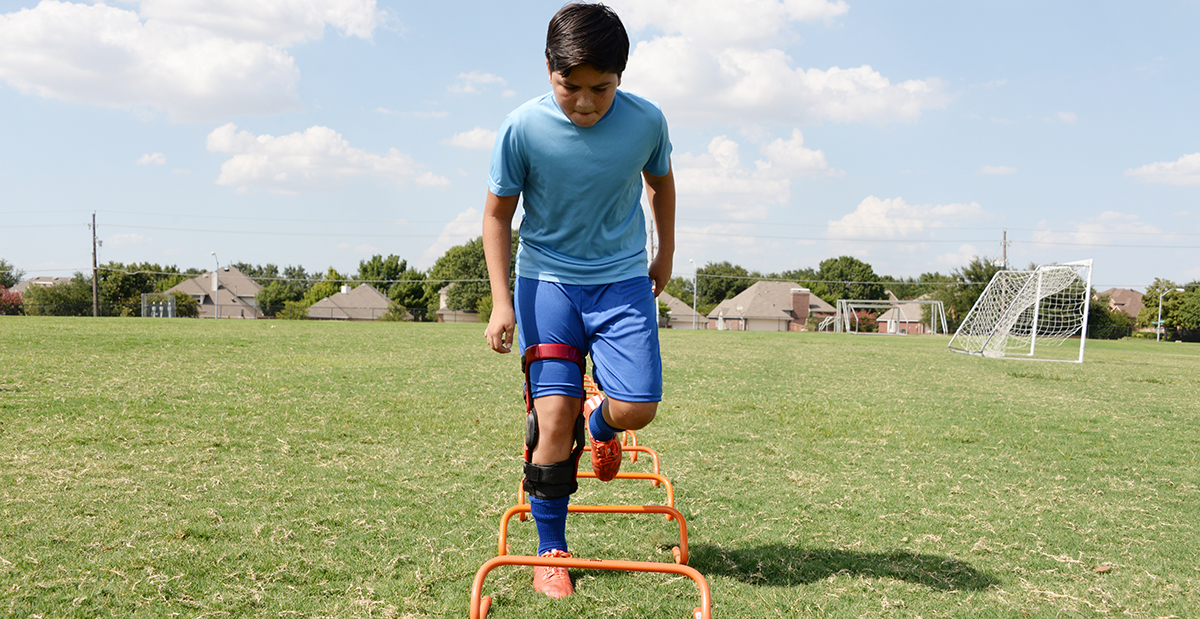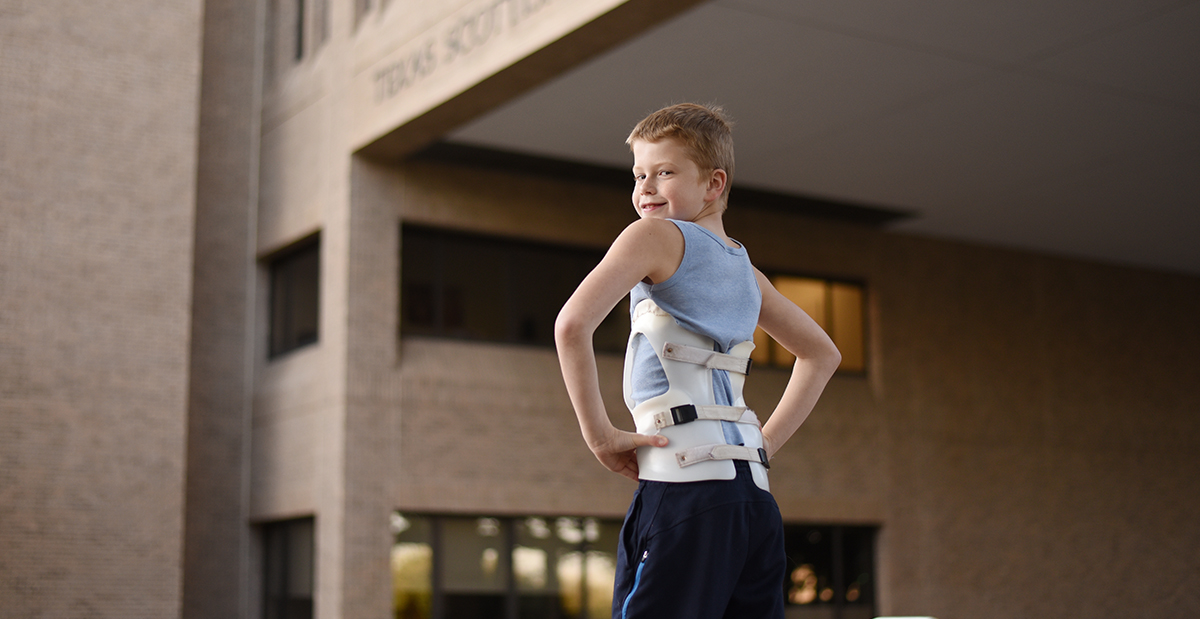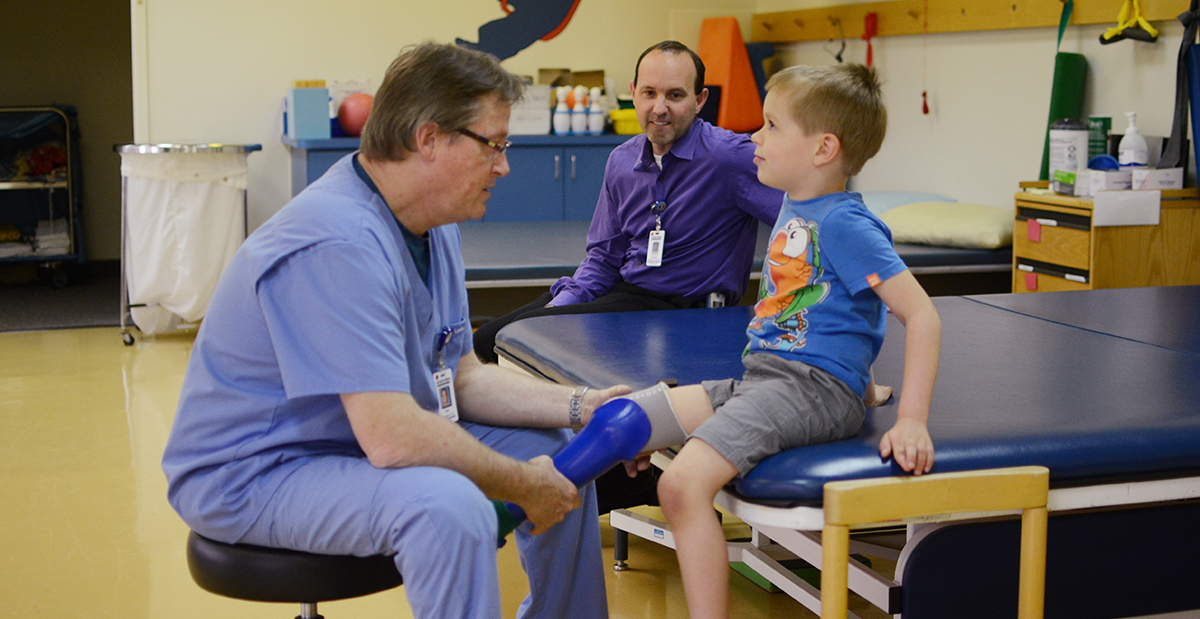All Julian wanted to be for Halloween was his favorite football player, Amari Cooper of the Dallas Cowboys. After bone cancer led to the amputation of his left leg this past summer, Julian received his first custom-made prosthetic leg, from the experts at Scottish...
